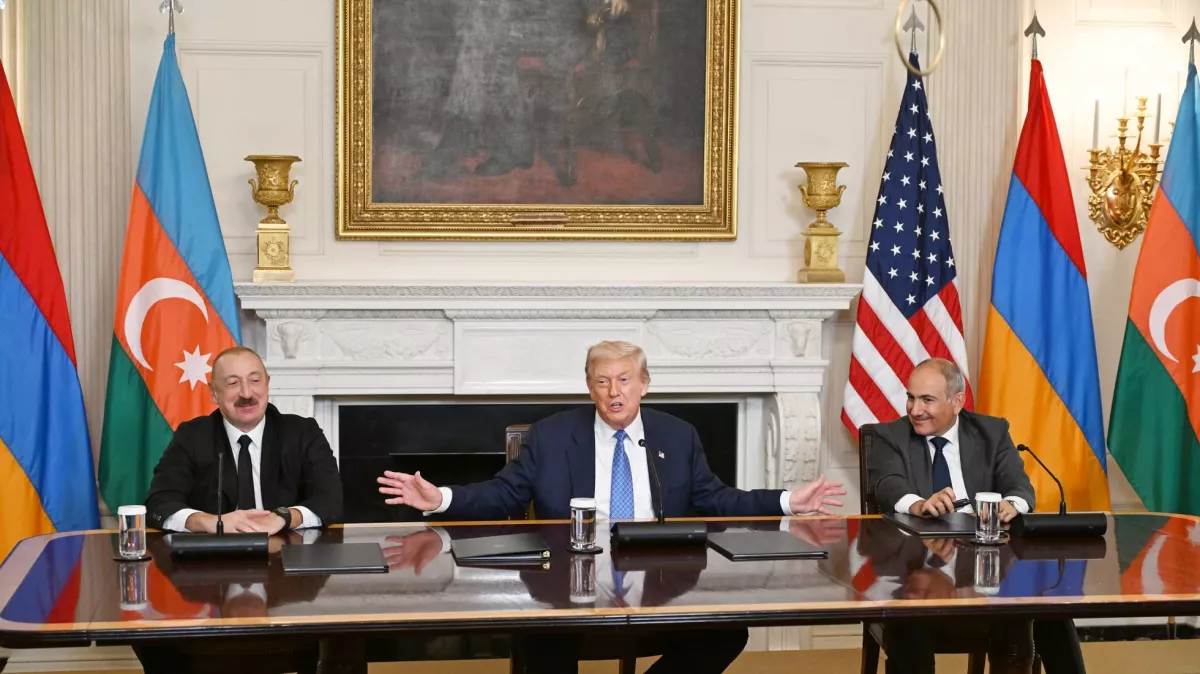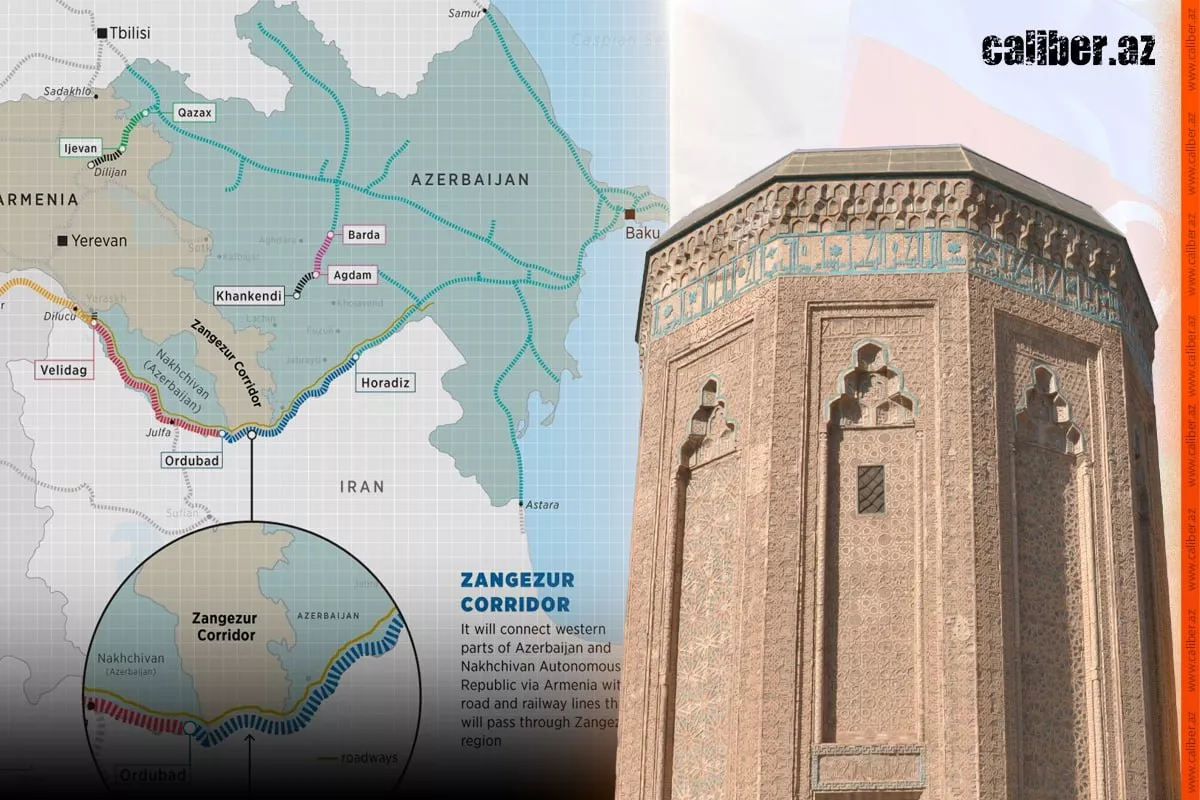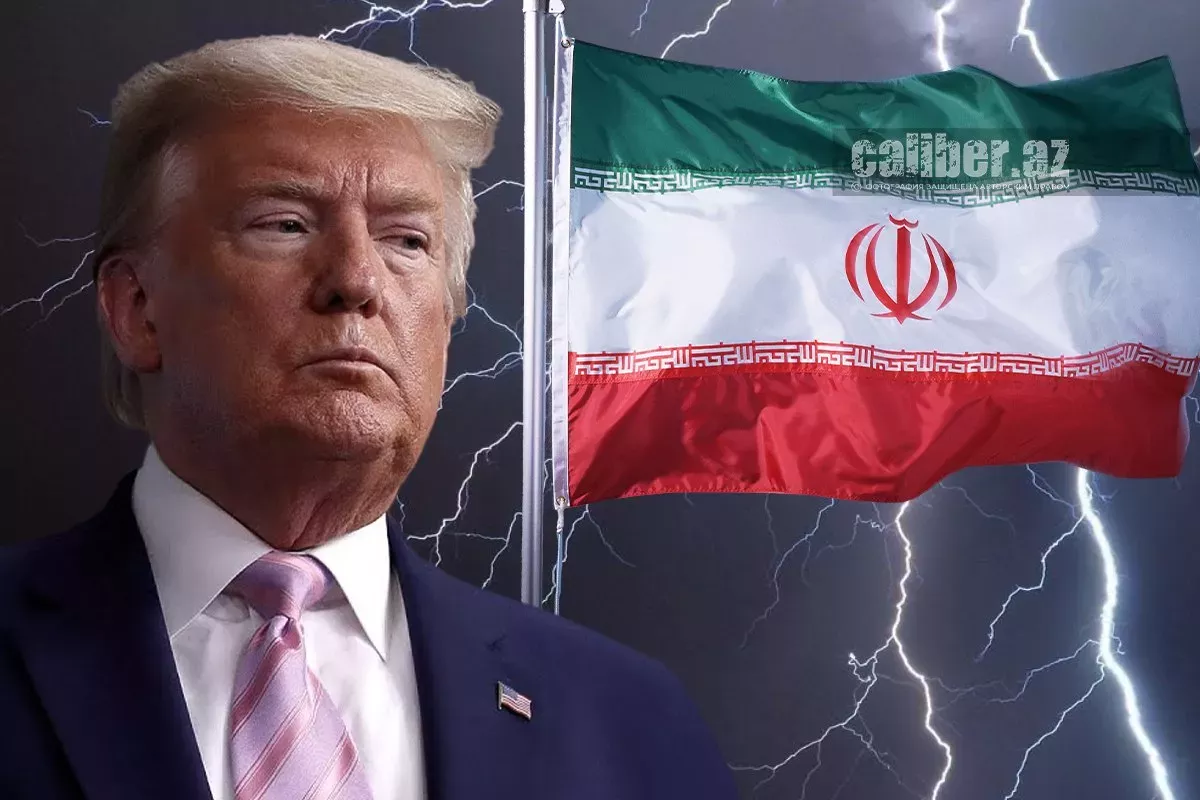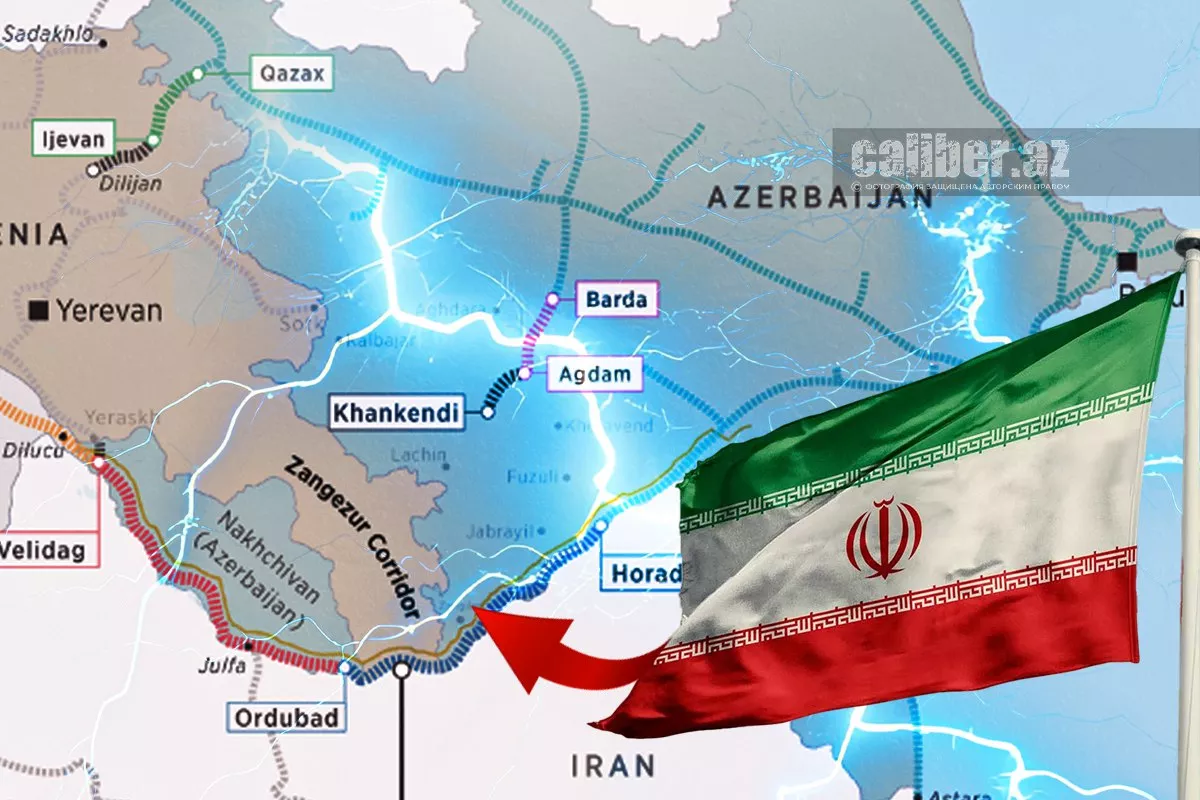Trump Route to peace: How Washington redrawing South Caucasus map Article by JNS
The Israel-based newspaper, The Jewish News Syndicate, has featured an article by former Israeli Communication Minister Ayoob Kara, focusing on the peace agreements brokered between Azerbaijan and Armenia in Washington, the Trump Route, and the broader geopolitical dynamics of the South Caucasus. Caliber.Az offers its readers the key insights from the article.
“At the White House last month, Azerbaijani President Ilham Aliyev and Armenian Prime Minister Nikol Pashinyan, under the mediation of US President Donald Trump, signed a landmark peace agreement that formally ended decades of conflict. The August 8 agreement marks a turning point for the South Caucasus and carries the potential to transform the US role in regional geopolitics.

The agreement also indirectly benefits Israel. Azerbaijan is a major oil supplier to Israel, and the planned transit corridor included in the agreement—the Trump Route for International Peace and Prosperity (TRIPP)—will only strengthen this supply line. Furthermore, reduced Iranian maneuvering through Armenia aligns with Israel’s strategic goals. As relations between the United States and Azerbaijan deepen, Israel-Azerbaijan defense ties will also grow stronger; Azerbaijan, at peace with its neighbors, benefits from this strategic partnership.
Just before the Washington agreement, China, India and Russia held talks in Moscow on Eurasian connectivity. They seek to counter US influence by promoting alternative corridors.
For much of the Cold War, the South Caucasus was firmly within Moscow’s orbit, with little direct US involvement. The collapse of the Soviet Union in 1991 opened space for new rivalries. Armenia aligned closely with Russia and, to some extent, with Iran, while Azerbaijan leaned toward Türkiye and the West.
The Karabakh conflict over territory both countries claimed became the central flashpoint. The first war in the early 1990s left Armenian forces in control of Azerbaijani territories. The OSCE Minsk Group, co-chaired by the United States, France and Russia, attempted to mediate the war, but Washington played a secondary role to Moscow.
After the Second Karabakh War in 2020, Russia deployed peacekeepers, while Iran exploited its relationship with Armenia to bypass sanctions. For the United States, the region remained a peripheral issue until now.
The 2025 peace treaty fundamentally reshapes this dynamic. Its cornerstone is the creation of the Zangezur Corridor, a transit route linking Azerbaijan proper with its Nakhchivan exclave through southern Armenia.

The TRIPP corridor is more than a logistical passage. It represents a geostrategic shift, designed to redirect energy and trade flows away from Russian and Iranian channels; anchor Western infrastructure investment in the heart of the Caucasus; and institutionalize America’s presence as the guarantor of peace and economic development.
The joint declaration signed in Washington included mutual recognition of territorial integrity, peaceful coexistence and renunciation of force; provisions that, if upheld, could prevent future escalations.
By inserting itself as the chief mediator, Washington displaces Moscow from its long-standing role. The sidelining of the OSCE Minsk Group further underscores the eclipse of Moscow-centered diplomacy.
For Iran, the stakes are equally high. Armenia had served as Tehran’s vital northern partner for bypassing sanctions. The US-controlled TRIPP corridor would undermine this route, weakening Iran’s ability to exploit geography for strategic leverage.

The European Union has traditionally favored a cautious approach, prioritizing slow confidence-building over sudden breakthroughs. By contrast, Washington’s intervention demonstrates a willingness to take risks for geopolitical gain. The European Union may now find itself playing catch-up, particularly in infrastructure investment and energy diversification projects linked to TRIPP.
The success of this peace deal depends not only on great power maneuvering but on domestic politics. Armenian leader Pashinyan faces the daunting task of amending constitutional clauses referring to territorial claims over Karabakh. With Armenian elections looming in 2026, resistance from nationalist factions could destabilize his government.
The TRIPP corridor is envisioned as an artery of commerce, connecting the Caspian Sea to Europe while bypassing hostile chokepoints. For Washington, it is a dual-use instrument, promoting trade while at the same time embedding a long-term strategic footprint.
However, its durability hinges on:
Armenia’s constitutional reforms and ability to maintain domestic consensus.
Sustained trust between Yerevan and Baku.
Regional buy-in from Türkiye and Georgia, whose logistical roles will be critical.
If these conditions falter, the TRIPP could become not a bridge to prosperity, but a new geopolitical flashpoint.

For the first time since the end of the Cold War, the United States has decisively reshaped the strategic landscape of the South Caucasus. The 2025 Aliyev-Pashinyan-Trump agreement signals a transition from Russian-dominated mediation to a US-led architecture of peace and commerce.
Whether the TRIPP lives up to its ambitious name will depend on local political will and Washington’s long-term commitment. But what is clear is that the South Caucasus has entered a new era, one in which American power defines the rules of the game.”








